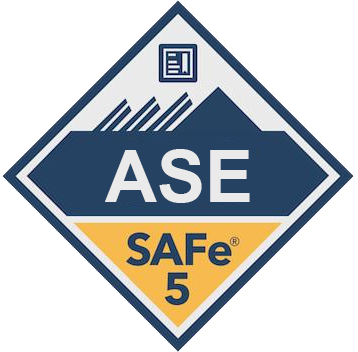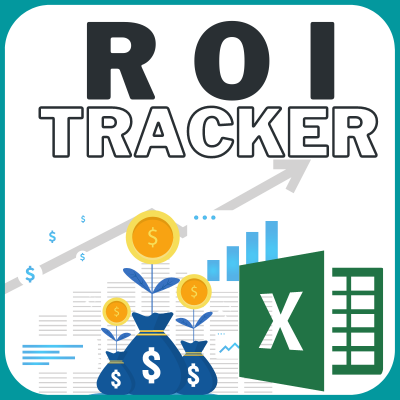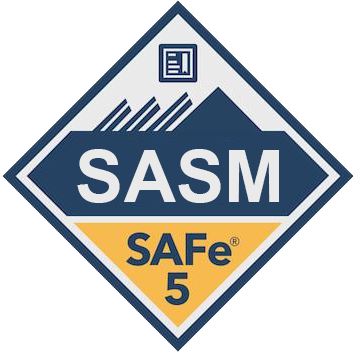Enabling Technical Agility for the Lean Enterprise
What skills do you need to deliver high-quality, software-centric solutions faster and more predictably? In the Agile Software Engineering course, you’ll learn how modern practices including XP, behavior-driven development (BDD), and test-driven development (TDD) enable continuous value flow and built-in quality. This interactive, three-day course also gives you guidance and tools to work effectively in remote environments with distributed teams.
The discipline of software engineering has evolved with the introduction of Lean-Agile and DevOps principles and practices. New skills and approaches help organizations deliver software-centric solutions faster, more predictably, and with higher quality.
During this three-day, workshop-oriented course, attendees learn the foundational principles and practices that make up the Agile Software Engineering discipline. Attendees learn how the continuous flow of value delivery and built-in quality are enabled by modern practices including XP technical practices, Behavioral-Driven Development (BDD), and Test-Driven Development (TDD).
Attendees learn proven practices to detail, model, design, implement, verify, and validate stories in a SAFe Continuous Delivery Pipeline. They will know the practices that build quality into code (abstraction, encapsulation, intentional programming) and designs (SOLID, Design patterns). Attendees also understand how Software Engineering fits into the larger solution context and their role in collaborating on intentional architecture and DevOps
SAFe® for Architects answers the questions:
- How do I build a test-first, principle-based team environment and technical infrastructure?
- How do Agile teams use BDD to create a shared understanding?
- How do we build in quality throughout the Continuous Delivery Pipeline?
What’s included:
- Course materials
- Remote learning via SAFe® Virtual Classrooms
- Access to SAFe® Collaborate, a visual online workspace
- One-year membership to the SAFe® Community Platform
- Access to content, tools, and resources you need to practice SAFe every day
- SAFe Agile Software Engineer certification exam
What you get
Becoming a Certified SAFe® Agile Software Engineer requires an exceptional range of skills and is a career path for many Software Engineers. Certification includes:
- Certified SAFe® Agile Software Engineer PDF certificate
- Certified SAFe® Agile Software Engineer digital badge to promote the accomplishment online
- One-year membership to the SAFe Community Platform, which includes access to the ASE Community of Practice
- Access to Meetup groups and events that provide connections to other certified SAFe professionals
- A variety of learning resources to support certified professionals during their SAFe journey
Annual Renewal
Certifications expire one year from the date the certification is earned.
Certified SAFe Membership Renewal—$295/year: One-year membership is included with first-time course attendance or can be purchased separately, Provides access to the community platform. For those who don’t seek certification but still benefit from the valuable content at the SAFe Community Platform
Exam Details
| Duration |
120 minutes |
| Number of questions |
60 |
| Passing score |
42/60 (70%) |
| Competency level |
Intermediate difficulty; Proficient, capable; can perform tasks with some assistance |
| Question format |
Multiple choice (one answer) or multiple select (2-3 answers) |
| Delivery |
Web-based, closed book, no outside assistance, timed |
| Access |
Community Platform upon completion of the course |
| Languages Offered |
English |
| Cost |
The first attempt is included in the course registration fee if taken within 30 days of course completion. Each retake or attempt past the 30-day window is $50 |
Exam prerequisite skills
- Understanding of SAFe for Teams
- Background in engineering, development, managing development, or quality assurance
Exam requirements
The first step toward becoming a Certified SAFe® Agile Software Engineer is to attend the SAFe® Agile Software Engineering course. This is a requirement because attending the course provides access to all the study materials and the exam.
Exam details
- Exam name – Safe Agile Software Engineer Exam
- Exam format – Multiple choice; Multiple select
- Exam delivery – Web-based (single-browser), closed book, no outside assistance, timed
- Exam access – Candidates can access the exam within the SAFe Community Platform upon completion of the SAFe® Agile Software Engineering course
- Exam duration – Once the exam begins, candidates have 120 minutes (2.0 hours) to complete the exam
- Number of questions – 60
- Passing score – 42 out of 60 (70%)
- Language – English
- Exam cost – First exam attempt is included as part of the course registration fee if the exam is taken within 30 days of course completion. Each retake attempt costs $50.
- Retake policy – The second attempt on the exam (first retake) can be done immediately after the first attempt. The third attempt requires a 10-day wait. The fourth attempt requires a 30-day wait.
Exam study materials
The exam is designed to measure knowledge and skill related to the job role. We highly recommend candidates use a variety of resources to prepare for this exam including:
- Course materials – The course materials are an essential artifact from the course and can be downloaded from the SAFe Community Platform. These materials can be used to refer back to the content that was presented during the class.
- Study guide – This comprehensive guide details the job role and all resources related to the exam, including a detailed reading list. Access is available through the Learning Plan in the SAFe Community Platform upon course completion.
- Practice test – The practice test is designed to be predictive of success on the certification exam, * and it has the same number of questions, level of difficulty, and time duration. It is part of the Learning Plan in the SAFe Community Platform and can be taken an unlimited number of times at no cost. *This is not the actual exam, and passing it does not guarantee success on the certification exam.
- Sample Questions – A web-enabled, flashcard-style version of the sample questions can be found online and in the study guide.




































































